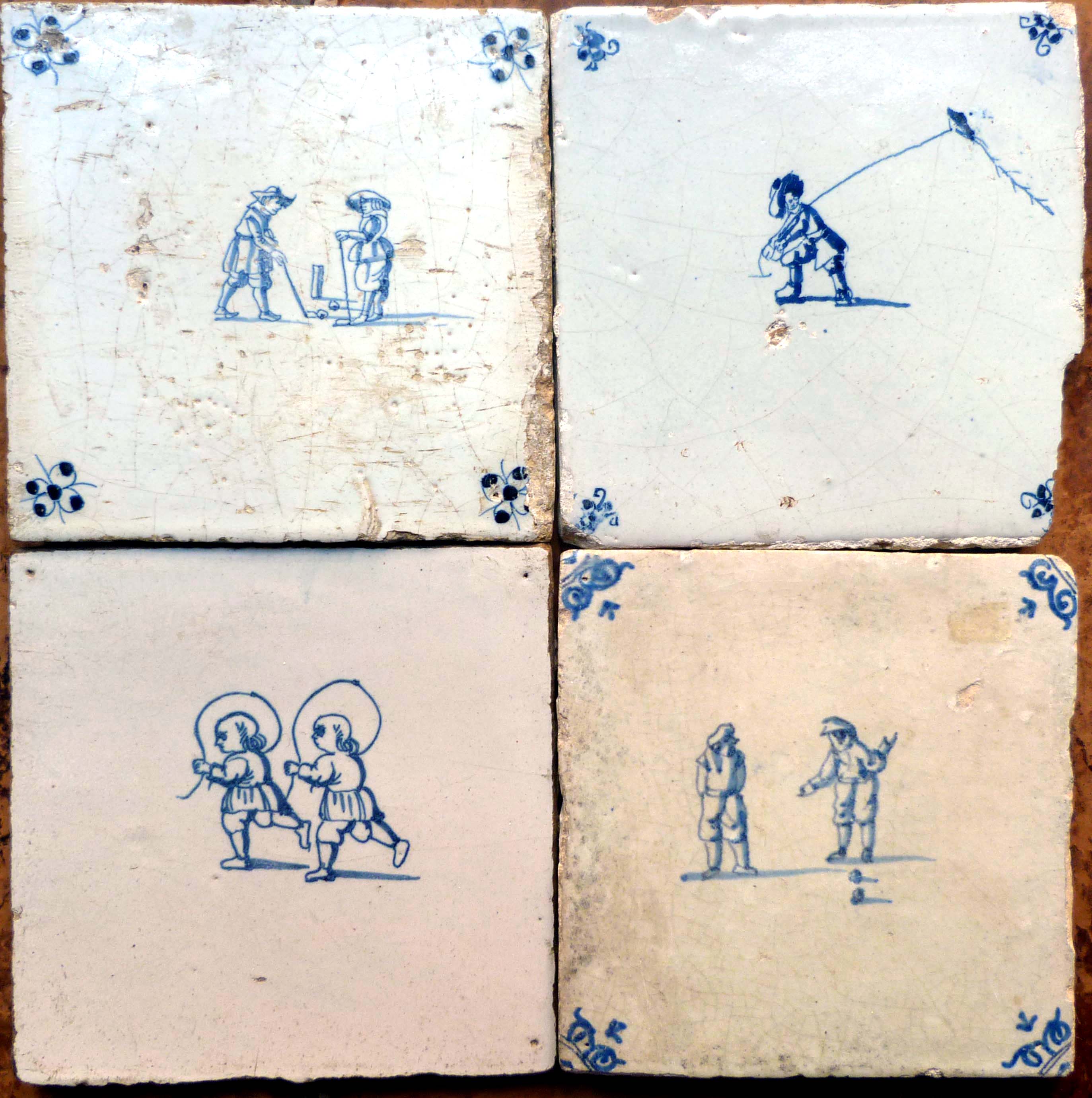
Image courtesy: Leiden American Pilgrims Museum - Leiden, The Netherlands, public domain
Hi-Res image: Leiden American Pilgrims Museum
Dutch Delft blue tiles from the 17-century often depict lively scenes of children at play, offering a glimpse into daily life and happy street scenes with noisy children both in Holland and New Netherland. Painted in the characteristic cobalt blue on a white tin-glazed surface, these small ceramic tiles portray a wide variety of games and activities, as illustrated here—boys spinning tops, flying a kite, or playing gold [“colf”, or “beugelen” in Dutch], and girls skipping rope.
These playful tile illustrations adorned hearths, walls, and staircases both in Amsterdam and New Amsterdam houses, such as the Kierstede family home in Pearl street. The tile illustrations also reflect 17-century moral and cultural values, celebrating the innocence and fleeting nature of childhood. These attractive tiles combined utility with decoration, serving as durable wall coverings while preserving for posterity happy children’s pastimes in an age gone by.
Leiden American Pilgrims Museum, summary:
John Robinson, the Pilgrims' minister, warned against treating children like “little adults;” they should not be made "men and women, before they become good boys and girls," he said. Many children began training as future housewives or laborers from a relatively young age - eight or nine years old. But children were not expected to spend all day working. Seventeenth-century depictions of children playing show us a wide variety of toys, ranging from dolls and toy soldiers, through hoops, jump-ropes, whirligigs, hobby-horses, tops, toy drums, and balls. Tobacco pipes were borrowed from smokers for blowing soap bubbles.
Children also played golf and flew kites, not to mention the occasional winter sport of skating. Poor children could skate by tying large sheep bones under their shoes to serve as runners. Many different group-games were played as well, such as varieties of marbles and knuckle-bone throwing. Although only one toy belonging to a Pilgrim child has survived - the whistle that was probably a teething toy, inscribed E.W., found at the site of Edward Winslow's house in Marshfield, Plymouth Colony - we can assume that Pilgrim children played the games common to the time [excerpted from Bangs, Strangers and Pilgrims, Travelers and Sojourners, pp. 389, 404].
Reference:
Location: Leiden Pilgrim Museum, Leiden, The Netherlands https://pieterskerk.com/pilgrimmuseum/
Date: ca. 1640-50
Dimension: Size · 5 1/8" x 5 1/8" x 3/8" (13 x 13 x 0.9 cm)

